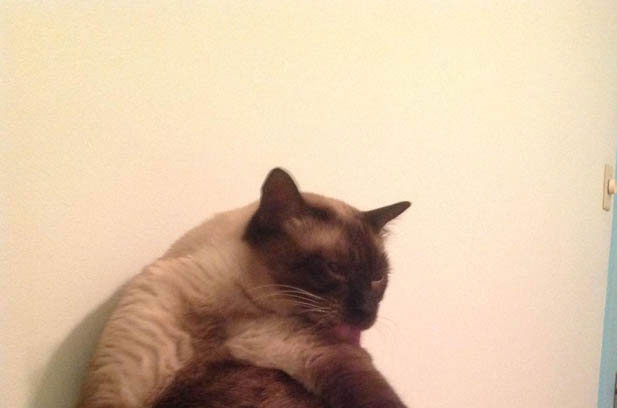In the world of cat lovers, debates about breed-specific personalities rage on. Some swear that Siamese are hyperactive, while others claim Ragdolls are inherently docile. But after welcoming an unexpected companion into my home, I’ve come to believe that feline personality is a tapestry woven from individual spirit, not genetic labels. My Russian Blue, a cat I never planned to adopt, taught me that the deepest bonds form when we let go of expectations and embrace the unique soul in front of us.
Debunking Breed Stereotypes: The Fallacy of “One Size Fits All”
The idea that “all cats of a breed act the same” is a myth. Sure, genetics may influence tendencies—Siamese often are vocal, Persians may prefer lounging—but ten Siamese cats can exhibit ten distinct personalities. I’ve seen shy Siamese who cower from strangers and bold ones who demand attention from every visitor. Similarly, not all Ragdolls are lap cats; some prefer climbing shelves to cuddling.
My skepticism was born from observation. A friend’s “lazy” Persian spends nights zooming like a kitten, while her “energetic” Bengal prefers napping in sunbeams. These contradictions highlight a truth: cats are individuals first, breeds second. As biologist John Bradshaw notes in Cat Sense, “Breed is just a starting point. A cat’s environment, socialization, and unique temperament play a bigger role in behavior.”

The Chaos of a New Arrival: Surviving the Honeymoon Phase
When I brought home my Russian Blue, named Loki, the first week was a test of patience. Like most cats in new environments, he was a bundle of nerves—scampering under the couch at the slightest noise, refusing food, and yes, nibbling my toes at 3 a.m. “Is this normal?” I texted a friend, bleary-eyed from sleepless nights. “Absolutely,” she replied. “Cats need time to trust their space—and you.”
Loki’s anxiety manifested in destructive ways. He knocked over vases while leaping between furniture, scratched my arms with untrimmed claws, and opened cabinets to explore hidden corners. “You’re more like a tiny raccoon than a cat,” I sighed, picking up yet another shattered glass. But beneath the chaos, there were flickers of curiosity—he’d peek from under the couch when I played soft music, or tentatively sniff the hand I extended.
The Slow Bloom of Trust: When Chaos Blossoms into Bond
Gradually, Loki’s defenses began to melt. On day five, he ate from my hand for the first time, his whiskers tickling my palm. By week two, he’d started following me from room to room, a shadow in sleek silver fur. The toe-nibbling stopped, replaced by gentle headbutts and purrs that rumbled like distant thunder.
His “training” was a two-way street. I learned to trim his nails regularly, providing scratching posts as alternatives. He learned that jumping on the dinner table earned a firm “no,” but curling in my lap earned treats. Most importantly, we established a routine—morning play sessions, afternoon naps by the window, evening cuddles—that turned chaos into comfort.
The Unexpected Choice: Why Loki Chose Me
My initial plan was to adopt a Siamese or Persian, but fate had other ideas. At the first cat café, a shy Siamese hid from me, while a Persian ignored my advances. Then there was Loki, a Russian Blue who locked eyes with me across the room and began chirping insistently. When I walked away to view other cats, his meows turned into urgent yowls, as if scolding me for even considering another.
This persistence spoke volumes. Breeders often talk about “cat selection”—how cats choose their humans. Loki’s determination to engage, to be seen, was a personality trait no breed guide could have predicted. “He’s a rare one,” the breeder noted. “Most Russian Blues are reserved, but he’s been demanding attention from day one.”
The Lesson: Love the Cat in Front of You
Loki is far from the “calm, elegant Russian Blue” I’d read about. He’s a mischief-maker who steals hair ties, a vocal companion who “talks” during TV shows, and a lap cat who insists on sitting exactly where I’m typing. But his quirks are what make him irreplaceable. When I’m stressed, he headbutts my chin until I laugh. When I’m lonely, he sleeps on my chest, his purrs a rhythmic reminder that I’m loved.
For anyone choosing a cat, my advice is simple:
Visit multiple cats, regardless of breed. Let their personalities shine.
Embrace the chaos. The first weeks are a storm, but the calm that follows is worth it.
Forget labels. A “timid” breed may surprise you with courage; an “energetic” breed may crave quiet moments.
The Beautiful Unpredictability of Feline Companionship
In the end, Loki taught me that the best relationships are built on acceptance, not expectations. Whether you’re drawn to a Siamese, a Ragdoll, or a “mismatched” Russian Blue, the key is to see the cat as they are—not as a breed stereotype.
As I watch Loki chase a laser pointer with the enthusiasm of a kitten (at age 3, no less), I’m reminded that cats are not products of their breed but of their unique spirit. They are chaos and comfort, independence and affection, all wrapped in fur. And that’s the magic—you don’t choose a cat because of what they “should be.” You choose them because of who they are.
Leave a Reply